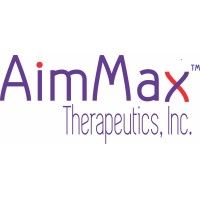预约演示
更新于:2025-05-07

AimMax Therapeutics, Inc.
更新于:2025-05-07
概览
标签
感染
神经系统疾病
免疫系统疾病
合成多肽
小分子化药
疾病领域得分
一眼洞穿机构专注的疾病领域
暂无数据
技术平台
公司药物应用最多的技术
暂无数据
靶点
公司最常开发的靶点
暂无数据
| 排名前五的药物类型 | 数量 |
|---|---|
| 合成多肽 | 2 |
| 小分子化药 | 1 |
| 排名前五的靶点 | 数量 |
|---|---|
| GR(糖皮质激素受体) | 1 |
关联
3
项与 AimMax Therapeutics, Inc. 相关的药物靶点 |
作用机制 GR激动剂 |
最高研发阶段批准上市 |
首次获批国家/地区 日本 |
首次获批日期1979-04-19 |
CN117897394
专利挖掘靶点- |
作用机制- |
在研适应症 |
非在研适应症- |
最高研发阶段药物发现 |
首次获批国家/地区- |
首次获批日期- |
WO2023034481
专利挖掘靶点- |
作用机制- |
在研适应症 |
非在研适应症- |
最高研发阶段药物发现 |
首次获批国家/地区- |
首次获批日期- |
100 项与 AimMax Therapeutics, Inc. 相关的临床结果
登录后查看更多信息
0 项与 AimMax Therapeutics, Inc. 相关的专利(医药)
登录后查看更多信息
8
项与 AimMax Therapeutics, Inc. 相关的新闻(医药)2024-03-06
·药研发
「 本文共:16条资讯,阅读时长约:3分钟 」今日头条靖因长效小核酸新药国内获批IND。靖因药业新型siRNA疗法SRSD107注射液获国家药监局临床试验默示许可,拟开发用于预防或治疗动静脉血栓。SRSD107可通过特异性肝靶向凝血因子XI(FXI)mRNA,抑制FXI的蛋白表达,阻断内源性凝血途径的激活,从而达到抗凝血/抗血栓的作用。目前,该新药正在澳大利亚开展Ⅰ期临床试验。国内药讯1.华奥泰银屑病长效单抗启动Ⅲ期临床。华博生物和华奥泰生物开发的IL-17A单抗HB0017登记启动一项Ⅲ期临床,拟评估用于治疗中重度斑块状银屑病的疗效和安全性。该项研究由北京大学人民医院张建中博士牵头开展。在Ⅰ期临床中,HB0017(300mg)治疗患者皮肤症状清除(PASI 90)评分均达到100%;药物耐受性良好。此外,HB0017具有较长的半衰期,有望提供2~3月给药1次的维持期治疗方案。2.科伦博泰ADC多项临床将亮相AACR。科伦博泰宣布其自主开发的TROP2 ADC新药SKB264(MK2870)将在AACR2024年会上公布用于治疗晚期胃癌经治患者以及治疗晚期非小细胞肺癌经治患者的两项Ⅱ期临床最新数据。值得一提的是,默沙东此次也将在会议上分享MK-2870针对既往治疗失败的EGFR突变或其他基因突变的非小细胞肺癌,以及联合Keytruda一线治疗PD-L1高表达非小细胞肺癌的临床进展。3.强生克罗恩病单抗拟纳入优先审评。强生旗下古塞奇尤单抗注射液(guselkumab)获CDE拟纳入优先审评,用于治疗中重度活动性克罗恩病成人患者。此前,该新药这一适应症已被CDE纳入突破性治疗品种。Guselkumab(Tremfya)是全球首个获批的白介素23(IL-23)抑制剂,可靶向抑制IL-23这种在自身免疫性疾病中起到关键性作用的细胞因子。该新药已于2019年12月在中国获批治疗银屑病。4.康弘1类抗肿瘤单抗获批临床。康弘药业旗下康弘生物1类生物制品KH801注射液获国家药监局临床许可,拟开发治疗晚期实体瘤。KH801能够与肿瘤细胞上的CD24特异性结合,通过阻断CD24/Siglec-10“别吃我”信号,提高肿瘤相关巨噬细胞(TAM)对肿瘤细胞的吞噬作用。在动物研究中,针对CD24的治疗策略对卵巢癌与三阴性乳腺癌具有治疗潜力,有望为这类难治性癌症提供新的解决方案。5.AZ血癌ADC中国获批临床。阿斯利康靶向CD123抗体偶联药物(ADC)AZD9829获国家药监局临床许可,拟开发治疗CD123阳性恶性血液疾病。AZD9829能够将TOP1i载荷递送到表达CD123的癌细胞中,导致DNA损伤和细胞凋亡。目前,阿斯利康正在美国开展Ⅰ/Ⅱ期临床,评估AZD9829单独或联合治疗CD123阳性血液恶性肿瘤患者的安全性、耐受性、药代动力学和初步抗肿瘤活性。6.星盛新辉“合成致死”小分子获批IND。星盛新辉小分子CHK1抑制剂XS-02胶囊获国家药监局临床试验默示许可,拟开发用于治疗晚期实体瘤。抑制CHK1会触发细胞周期阻滞,阻断肿瘤细胞的DNA损伤应答,达到“合成致死”的效果。公布于AACR2023年会上的临床前数据显示,XS-02在多种实体瘤模型(尤其是PARP抑制剂原发/继发耐药的肿瘤PDX模型)中,显示出良好的抗肿瘤能力,且安全性可控。国际药讯1.Formosa公司改良型眼科新药获批上市。Formosa公司和AimMax公司开发的0.05%丙酸氯倍他索(clobetasol propionate)眼科悬液APP13007获FDA批准上市,成为首个丙酸氯倍他索眼科产品,用于治疗眼科手术后的炎症和疼痛。在Ⅲ期临床中,APP13007治疗在清除炎症和缓解疼痛的疗效方面较安慰剂更优。远大医药拥有该新药在中国大陆、香港和澳门地区的独家开发和商业化授权。2.司美格鲁肽慢性肾病III期临床积极。诺和诺德公布其GLP-1激动剂司美格鲁肽辅助治疗合并肾功能不全2型糖尿病和慢性肾病的Ⅲ期临床FLOW主要结果。数据显示,与安慰剂相比,司美格鲁肽使患者的肾脏疾病进展以及心血管和肾脏死亡风险降低24%,达到优效性终点。去年10月,由于司美格鲁肽的疗效达到预设标准,诺和诺德基于独立数据监查委员会(DMC)的建议提前终止FLOW试验。3.罗氏/Alnylam长效降压药II期临床成功。罗氏与Alnylam开发的RNAi疗法Zilebesiran治疗轻中度高血压的II期KARDIA-2研究达到了主要终点。患者在标准治疗的基础上接受Zilebesiran(600mg,每6个月1次,皮下注射)治疗,3个月后,24h平均收缩压(SBP)较基线显著降低;且药物安全性良好。详细结果将在2024年美国心脏病学会年度科学会议上公布。4.Empros公司口服减肥复方Ⅱ期临床积极。Empros Pharma公司口服组合配方EMP16(奥利司他/阿卡波糖)治疗肥胖或超重人群的Ⅱb期临床结果积极。数据显示,EMP16治疗使受试者平均体重减轻8%。该公司独有配方使两种化合物在胃肠道系统产生局部效果,增强疗效的同时降低潜在的副作用。Empros计划尽快开展两项用于治疗肥胖(伴或不伴有2型糖尿病)或超重人群的Ⅲ期临床。5.Exonate公司FIC眼药水临床积极。Exonate公司基于SRPK1抑制剂开发的眼药水配方EXN407,在一线治疗轻中度非增生性糖尿病视网膜病和轻度糖尿病性黄斑水肿患者的Ⅰb/Ⅱa期临床中获积极结果。EXN407通过抑制SRPK1,可选择性地针对导致视网膜血管疾病进展的VEGF亚型,抑制眼内渗漏血管的异常生长。数据显示,与安慰剂相比,EXN407治疗能持续减少患者的黄斑厚度;有更多患者实现血管渗漏显著减少(60%vs20%)。此外,EXN407总体耐受性良好。6.DMD基因疗法早期临床积极。REGENXBIO公司AAV8基因疗法RGX-202治疗4至11岁杜氏肌营养不良(DMD)患者的Ⅰ/Ⅱ期AFFINITY DUCHENNE试验结果积极。RGX-202旨在递送表达微肌营养不良蛋白的转基因进入骨骼肌和心肌组织。数据显示,接受RGX-202剂量水平2治疗的首例患者在三个月后,其微肌营养不良蛋白表达较标准对照提高75.7%,且在十周时观察到患者血清CK水平较基线降低77%,患者的力量与运动功能获得了初步改善。医药热点1.王卉晓履新安徽省中医药管理局党组书记。3月2日,据安徽省中医药管理局官网“局领导介绍”一栏信息显示,王卉晓已任安徽省卫生健康委员会党组成员、安徽省中医药管理局党组书记。公开信息显示,王卉晓,女,1967年11月出生,安徽合肥人,研究生学历,中共党员。她曾挂任安徽省合肥市庐阳区委常委、副区长;安徽省第二人民医院党委书记、安徽医学高等专科学校党委副书记等职。2.北京积水潭医院成立日间手术中心。3月4日,北京积水潭医院日间手术中心正式挂牌,旨在有效减轻患者就医负担,推动医院高质量发展。日间手术中心计划开设床位15张,由手外科医师、麻醉医师、护理人员共同组成日间手术团队,试运行阶段主要收治手外科患者,可完成手部腱鞘炎、腱鞘囊肿、异物取出及内固定装置取出等手外科常规手术。符合日间手术的患者可以在24小时内完成“入院、住院、出院”全流程诊疗。3.湖北省这家医院成立睡眠医学中心。近日,随州市中心医院睡眠医学中心正式成立。该中心是集睡眠障碍预防、监测、诊断与治疗于一体,为患者解决各类睡眠问题的综合诊治中心。睡眠医学中心开放病床30张,设置于季梁院区心身医学科内,配备多导睡眠监测系统(PSG)、重复经颅磁刺激治疗仪、团体生物反馈治疗仪、失眠治疗仪、心理CT等先进设备,并设有睡眠监测室、心理测量室、物理治疗室、个体心理治疗及团体心理治疗室。评审动态 1. CDE新药受理情况(03月06) 2. FDA新药获批情况(北美03月05日)股市资讯上个交易日 A 股医药板块 -0.64%涨幅前三 跌幅前三润都股份+10.00% 英 诺 特 -5.42%无锡晶海+5.65% 恩华药业-4.72%通化金马+5.21% 万泰生物-4.32%【赛伦生物】公司实际控制人之一范铁炯、副总经理成琼、副总经理彭良俊及财务总监李绍阳计划自2024年2月26日起6个月内增持公司股份,合计增持金额不低于380万元,且不超过630万元。【百济神州】旗下全资子公司Pi Health拟以4,179.84万美元的估值,对另一全资子公司Pi Health Cayman进行吸收合并,公司将直接持有Pi Health相应股权,公司关联方将参与本次交易。交易完成后,百济神州持有PiHealth 45.71%的股份,低于50%,且百济神州仅有权指定一名董事,百济神州无法控制Pi Health。 【国药现代】旗下国药青海生物收到中华人民共和国农业农村部签发的兽药产品批准文号批件,批准羊败血性链球菌病灭活疫苗(100ml/瓶、250ml/瓶)通过注册。 - The End -戳“阅读原文”,了解更多医药研发及股市资讯。
临床3期优先审批临床申请抗体药物偶联物临床2期
2024-03-05
·药明康德
▎药明康德内容团队编辑日前,Formosa Pharmaceuticals和AimMax Therapeutics宣布,美国FDA已批准0.05%丙酸氯倍他索(clobetasol propionate)眼科悬液(APP13007)上市,用于治疗眼科手术后的炎症和疼痛。新闻稿指出,这是FDA批准的首个丙酸氯倍他索眼科产品,也是15年来眼科市场上的首个新型类固醇疗法,为患者提供了方便直接的给药方案。丙酸氯倍他索眼科悬液利用了一种超强效皮质类固醇,基于Formosa Pharmaceuticals公司专有的APNT纳米颗粒配方平台生产。FDA的批准基于两项3期临床试验,试验结果显示了其快速且持续的炎症清除和疼痛缓解效果,在统计学和临床上均优于安慰剂(p<0.001)。接近90%的患者在手术之后完全没有疼痛,约60%的患者在眼科手术后15天内完全没有炎症反应。远大医药集团拥有这款疗法在中国大陆、香港和澳门地区的独家开发和商业化权益。在中国,它已于2023年4月获批开展3期临床研究。这是一项多中心、随机双盲、安慰剂对照的3期临床研究,拟入组252例接受白内障手术的患者,旨在评估其用于治疗白内障手术后炎症和疼痛的有效性和安全性。大家都在看▲欲了解更多前沿技术在生物医药产业中的应用,请长按扫描上方二维码,即可访问“药明直播间”,观看相关话题的直播讨论与精彩回放参考资料:[1] Formosa Pharmaceuticals And AimMax Therapeutics Receive FDA Approval For Clobetasol Propionate Ophthalmic Suspension 0.05%, For The Treatment Of Post-Operative Inflammation And Pain Following Ocular Surgery. Retrieved March 5, 2024, from https://www.formosapharma.com/formosa-pharmaceuticals-and-aimmax-therapeutics-receive-fda-approval-for-clobetasol-propionate-ophthalmic-suspension-0-05-for-the-treatment-of-post-operative-inflammation-and-pain-following-ocular-su/[2] Eyenovia Congratulates Formosa Pharmaceuticals on FDA Approval of Clobetasol Propionate Ophthalmic Suspension 0.05% for the Treatment of Post-operative Inflammation and Pain Following Ocular Surgery. Retrieved March 5, 2024, from https://eyenovia.com/eyenovia-congratulates-formosa-pharmaceuticals-on-fda-approval-of-clobetasol-propionate-ophthalmic-suspension-0-05-for-the-treatment-of-post-operative-inflammation-and-pain-following-ocular-surgery/免责声明:药明康德内容团队专注介绍全球生物医药健康研究进展。本文仅作信息交流之目的,文中观点不代表药明康德立场,亦不代表药明康德支持或反对文中观点。本文也不是治疗方案推荐。如需获得治疗方案指导,请前往正规医院就诊。版权说明:本文来自药明康德内容团队,欢迎个人转发至朋友圈,谢绝媒体或机构未经授权以任何形式转载至其他平台。转载授权请在「药明康德」微信公众号回复“转载”,获取转载须知。分享,点赞,在看,聚焦全球生物医药健康创新
临床3期
2024-03-05
Besides marketing Formosa’s drug in the U.S., Eyenovia is exploring further development of the clobetasol propionate formulation in its Optejet dispenser.
Taiwan’s Formosa Pharmaceuticals has gained an FDA approval for a reformulation of a decades-old corticosteroid.
Monday, the U.S. FDA granted approval to Formosa and AimMax Therapeutics’ clobetasol propionate ophthalmic suspension 0.05% to treat post-operative inflammation and pain following eye surgery.
The drug utilizes a potent corticosteroid modified with Formosa’s APNT nanoparticle formulation platform, which makes it possible to administer to the eye via a twice-daily dosing regimen, the companies said in a release.
Clobestasol propionate is a prednisolone derivative that snared its first FDA approval on Dec. 27, 1985. As a topical steroid, the drug is used to treat multiple skin conditions such as eczema, psoriasis, allergies and rash.
The FDA based its recent approval on two phase 3 trials, in which Formosa’s nanosuspension steroid provided “rapid and sustained” clearance of inflammation and pain relief after eye surgery versus placebo, the company explained in its release.
Formosa’s eye-drop is set to enter a $1.3 billion market for topical ophthalmic steroids, the company said.
In order to breach the market, Formosa has tapped commercial stage eyecare specialist Eyenovia in the U.S. In a separate release, Eyenovia said it plans to launch in the U.S. “as soon as this summer,” leveraging the same salesforce it uses to market its pupillary dilation spray Mydcombi.
Mydcombi, a fixed-dose combination of two popular dilating meds tropicamide and phenylephrine, was approved in May of 2023. The drug represents the first approved product made with Eyenovia’s Optejet device system.
Unlike traditional eye droppers where patients need to tilt their heads and fight the urge to avoid a droplet, Optejet dispenses its drug in microdoses horizontally as a spray with the push of a button.
As for the newly approved steroid nanosuspension, Eyenovia picked up the U.S. commercial rights to Formosa’s product last August.
The eyecare specialist paid $2 million upfront to Formosa, split evenly between cash and stock, and also pledged up to $4 million in development milestones and $80 million in sales milestones, according to a recent securities filing.
Besides marketing Formosa’s drug, Eyenovia is exploring further development of the clobetasol propionate formulation in its Optejet dispenser as a potential treatment for dry eye.
Elsewhere, Formosa has been busy striking separate commercialization pacts in other countries, too.
In late January, the company enlisted Cristália Produtos Químicos Farmacêuticos to help bring the product to the Brazilian market.

上市批准临床3期引进/卖出
100 项与 AimMax Therapeutics, Inc. 相关的药物交易
登录后查看更多信息
100 项与 AimMax Therapeutics, Inc. 相关的转化医学
登录后查看更多信息
组织架构
使用我们的机构树数据加速您的研究。
登录
或

管线布局
2025年08月30日管线快照
管线布局中药物为当前组织机构及其子机构作为药物机构进行统计,早期临床1期并入临床1期,临床1/2期并入临床2期,临床2/3期并入临床3期
药物发现
2
1
批准上市
登录后查看更多信息
当前项目
| 药物(靶点) | 适应症 | 全球最高研发状态 |
|---|---|---|
丙酸氯倍他索 ( GR ) | 术后炎症 更多 | 批准上市 |
CN117897394 | 感染 更多 | 药物发现 |
WO2023034481 | 感染 更多 | 药物发现 |
登录后查看更多信息
药物交易
使用我们的药物交易数据加速您的研究。
登录
或

转化医学
使用我们的转化医学数据加速您的研究。
登录
或

营收
使用 Synapse 探索超过 36 万个组织的财务状况。
登录
或

科研基金(NIH)
访问超过 200 万项资助和基金信息,以提升您的研究之旅。
登录
或

投资
深入了解从初创企业到成熟企业的最新公司投资动态。
登录
或

融资
发掘融资趋势以验证和推进您的投资机会。
登录
或

Eureka LS:
全新生物医药AI Agent 覆盖科研全链路,让突破性发现快人一步
立即开始免费试用!
智慧芽新药情报库是智慧芽专为生命科学人士构建的基于AI的创新药情报平台,助您全方位提升您的研发与决策效率。
立即开始数据试用!
智慧芽新药库数据也通过智慧芽数据服务平台,以API或者数据包形式对外开放,助您更加充分利用智慧芽新药情报信息。
生物序列数据库
生物药研发创新
免费使用
化学结构数据库
小分子化药研发创新
免费使用
